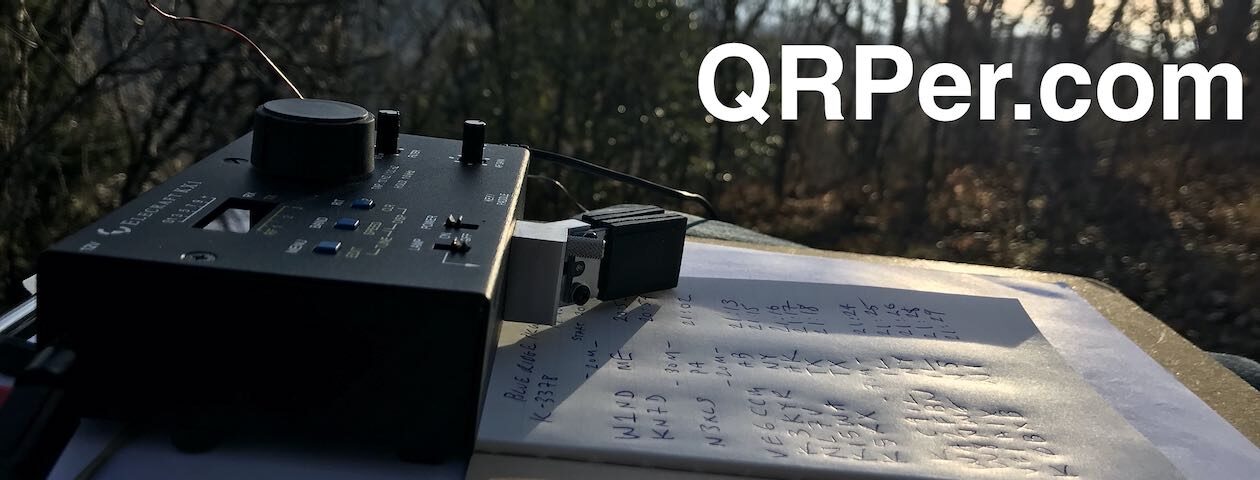Two days before Hurricane Helene impacted western North Carolina (Wednesday, September 25, 2024), I stopped by the Blue Ridge Parkway for a quick POTA activation to thoroughly test my MTR-3B self-contained field kit.
This was crucial, as I had plans to conduct multiple SOTA activations during the 2024 W4 SOTA campout in north Georgia the following week. (Unfortunately, due to Hurricane Helene, I had to cancel those plans.)
The importance of a full field trial
 This is something I always emphasize during presentations about SOTA, POTA, or traveling with radio: don’t assume your field kit is complete and fully functional—you must test it to know for sure.
This is something I always emphasize during presentations about SOTA, POTA, or traveling with radio: don’t assume your field kit is complete and fully functional—you must test it to know for sure.
A field test confirms two things:
- You have everything you need inside your kit to complete an activation.
- Everything in the kit actually works.
When preparing for something like a SOTA weekend or a family vacation, I usually deploy each of my field kits either at home or a local park. I power up the radio and make at least one contact, essentially mimicking a real activation. If everything works, I know the kit is good to go!
This simple process is an incredibly effective way to ensure your gear is ready for action.
Blue Ridge Parkway (US-3788)
 That Wednesday, I squeezed in the activation between errands in town. The Folk Art Center near Highway 70 in East Asheville is the perfect spot—it’s a quick and easy detour.
That Wednesday, I squeezed in the activation between errands in town. The Folk Art Center near Highway 70 in East Asheville is the perfect spot—it’s a quick and easy detour.
 Or at least it was before Helene. Now, with two bridges damaged—especially one major bridge on Highway 70—the two-minute detour to the Folk Art Center has turned into a 15-25 minute round trip, depending on traffic. (You never realize how essential bridges are until they’re gone!)
Or at least it was before Helene. Now, with two bridges damaged—especially one major bridge on Highway 70—the two-minute detour to the Folk Art Center has turned into a 15-25 minute round trip, depending on traffic. (You never realize how essential bridges are until they’re gone!)
 I parked near the picnic area, grabbed my gear, and headed for my usual picnic table setup spot.
I parked near the picnic area, grabbed my gear, and headed for my usual picnic table setup spot.
 Unfortunately, it was absolutely crawling with ants—likely a result of spilled juice or food. I moved to the other picnic table in the same area.
Unfortunately, it was absolutely crawling with ants—likely a result of spilled juice or food. I moved to the other picnic table in the same area.
Testing the MTR-3B Kit in Real-Time
 In the video, you’ll see me use every piece of gear in the field kit, except for the “bare bones” arborist throw line and weight. Since I had my other Weaver throw line kit with me, I used it to save time. I’d recently tested and re-packed the throw line in the MTR-3B kit, so I already knew it was in working order.
In the video, you’ll see me use every piece of gear in the field kit, except for the “bare bones” arborist throw line and weight. Since I had my other Weaver throw line kit with me, I used it to save time. I’d recently tested and re-packed the throw line in the MTR-3B kit, so I already knew it was in working order.
Setup was quick and easy. Once I connected the antenna and powered up the radio, I used my N6ARA Tiny SWR Meter to confirm I had a good match—since the MTR-3B LCD lacks an SWR meter. Fortunately, I had a perfect impedance match.
Time to play radio!
Gear (MTR-3B Self-Contained Field Kit)
 Note: All Amazon, CW Morse, ABR, Chelegance, eBay, and Radioddity links are affiliate links that support QRPer.com at no cost to you.
Note: All Amazon, CW Morse, ABR, Chelegance, eBay, and Radioddity links are affiliate links that support QRPer.com at no cost to you.
Radio
Watertight Case
Antenna System
- K6ARK No-Counterpoise 40M EFHW
- N6ARA MiniSWR 20-80M
- Bare-Bones Arborist throw line kit: 25 meters of Marlow KF1050 Excel 2mm Throwline, and one Weaver 8 or 10oz weight
Key
Battery
Logging
Audio
- Sennheiser earbuds with in-line analog volume control (discontinued 1999 model)
Backpack
Camera and Audio Recording
- DJI OSMO 4 action camera with Joby Telepod Sport Tripod
- Sony ICD-FX312 Digital Recorder ($20 thrift store find)
On The Air
 I started calling CQ POTA on 20 meters, and within minutes, the contacts started rolling in. Woo-hoo! Continue reading Testing my MTR-3B field kit before a weekend of SOTA (spoiler: that never happened)
I started calling CQ POTA on 20 meters, and within minutes, the contacts started rolling in. Woo-hoo! Continue reading Testing my MTR-3B field kit before a weekend of SOTA (spoiler: that never happened)





















